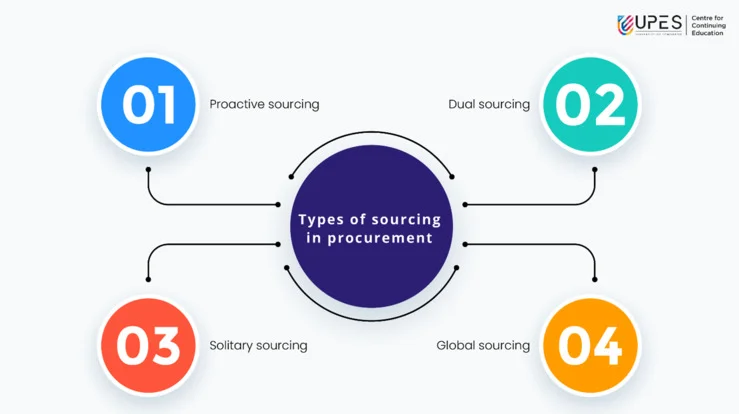Procurement and Sourcing: Acquiring Goods and Services from Suppliers

Purchasing products and services from outside vendors is crucial to supply chain management’s sourcing and procurement processes. These procedures are essential for ensuring organizations can access the resources they need to function effectively and efficiently.
The success of sourcing and procurement in supply chain management depends on various factors, including identifying suitable suppliers, establishing favorable terms and conditions, and effectively managing supplier relationships.
Procurement process
A procurement process is a systematic way to buy supplies of products and services. It entails actions intended to guarantee that the company chooses the best supplier, gets the necessary products and services at a fair price, and fulfills its quality, quantity, and delivery requirements.
Steps involved in the procurement process
The procurement process typically involves the following steps:
- Identifying the need for goods or services
- Preparing a request for proposal (RFP) or request for quotation (RFQ)
- Sending the RFP/RFQ to potential suppliers
- Receiving and evaluating proposals
- Selecting a supplier
- Negotiating the terms and conditions of the contract
- Awarding the contract
- Managing the supplier relationship and monitoring performance
Procurement and sourcing strategies
Effective procurement and sourcing strategies are essential for enterprises to improve their procurement procedures and ensure they can get the products and services they require at the best possible price, quality, and delivery.
Some common procurement and sourcing strategies include:
- Centralized procurement:This involves grouping all purchasing activities under the control and standardization of a single department or team.
- Decentralized procurement:This involves allowing other departments or business divisions to make purchases, increasing flexibility and responsiveness.
- Collaborative procurementThis involves cooperating with other businesses to pool purchasing power and use economies of scale.
The organization’s size, structure, industry, and the type of goods or services being acquired all play a role in choosing the best procurement and sourcing strategy.

Difference between Procurement, Purchasing, and Sourcing.
Although the terms procurement, purchasing, and sourcing are sometimes used interchangeably, they refer to different supply chain management procedures and tasks.
Procuring goods and services from determining a need to choosing vendors, negotiating deals, and managing supplier relationships—is called procurement. It includes both sourcing and purchasing.
Key differences between these terms
Although the terms procurement, purchasing, and sourcing are sometimes used interchangeably, they refer to different supply chain management procedures and tasks.
Procuring goods and services—from determining a need to choosing vendors, negotiating deals, and managing supplier relationships—is called procurement. It includes both sourcing and purchasing.
In essence, procurement is a broader term encompassing purchasing and sourcing strategies in supply chain management.
Although sourcing and purchasing are crucial, they have unique goals and actions. Effective procurement requires careful consideration of all three tasks to ensure the organization can purchase the items and services it needs at the best possible price, quality, and delivery.
Types of Procurement
Understanding the different types of procurement can help organizations identify the most appropriate approach to meet their procurement needs.
Types of procurement based on the nature of goods or services
- Direct procurement: This refers to buying products or services that are directly connected to the manufacturing or production process. Examples include equipment, machinery, and raw materials.
- Indirect procurement: This refers to buying products or services that aren’t directly involved in the manufacturing or production. Examples include business supplies, Computer hardware, and expert services.
Types of procurement based on the Procurement Process
- Traditional procurement:
To accomplish this, vendors respond with offers to a request for proposals (RFP) or request for quotations (RFQ).
Choosing a single supplier without a competitive bidding procedure is a competitive process. This strategy is often adopted when one supplier can deliver the needed goods or services or when the procurement is time-sensitive.
- Framework procurement:
This involves choosing several vendors who have been invited to submit bids for particular procurement opportunities. The purchase process is streamlined with this method, and administrative expenses are decreased.
- Electronic procurement:
This entails utilizing technology, such as e-tendering, e-auctions, and e-procurement platforms, to streamline the procurement process.
The organization’s procurement objectives, the type of goods or services being purchased, and the marketplace competition all play a role in choosing the best procurement method. Organizations can improve their procurement procedures and accomplish their procurement objectives by knowing the various forms of procurement.
Types of sourcing in Procurement
-
Reactive sourcing:
This entails locating and choosing vendors when the need arises. Usually a short-term strategy, it is used for unforeseen or urgent procurement demands.
-
Proactive sourcing:
Maintaining a consistent supply of goods or services entails building supplier relationships over time. It usually entails a more strategic approach and continual supplier development and review.
-
Solitary sourcing
This frequently chooses a single supplier to fulfill a specific procurement demand because they are the only supplier with the necessary products or services. However, this strategy may only be safe if the provider produces what was promised or has quality problems.
-
Dual sourcing:
This entails choosing two vendors to reduce risk and guarantee a steady supply of goods or services for a specific procurement demand. Although this strategy may offer more flexibility and security, it may also increase administrative and managerial expenditures.
-
Global sourcing:
There is a sourcing of services from different countries. Due to the disparities in language, culture, and legislation, it can save money and give access to new markets, but it can also be challenging.
The selection of the best sourcing strategy is influenced by several variables, including the organization’s procurement objectives, the type of goods or services being purchased, and the market environment. As a result, organizations can improve their procurement procedures more effectively and meet their procurement objectives by having better awareness of the various sourcing methods.
Conclusion
Supply chain management processes like procurement and sourcing are essential when buying products and services from vendors.
To be successful in procurement management, organizations should focus on developing strong supplier relationships, leveraging technology to streamline processes, and continuously evaluating and improving procurement practices.
Recommended Blogs

7 Surprising Benefits of an MBA in Oil and Gas Management
An MBA in Oil and Gas Management helps you advance your career with Leadership Skills, Networking, Global Knowledge, Professional Growth.
Read MoreMar 15, 2024 I 2 minutes
45+ Business Development Interview Qs! (Basic, Concepts, Tech)
Master your Business Development interview prep with 45 most asked questions for freshers, experienced & techies. New Questions updated!
Read MoreFeb 16, 2024 I 10 minutes
Introduction to Renewable Energy Management: What You Need To Know
Discover what is renewable energy management, its importance to the world and the key aspects of managing these energy sources.
Read MoreJan 20, 2023 I 2 minutes
Ace Your Data Governance Interview with these 55 Question Types
Master 55 data governance interview Questions, from data lineage puzzles to AI challenges. Sharpen your skills & land your dream data role.
Read MoreJan 21, 2024 I 15 minutes



